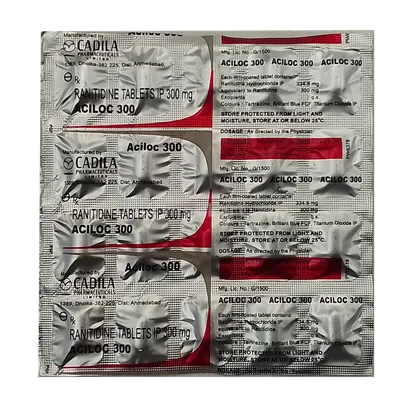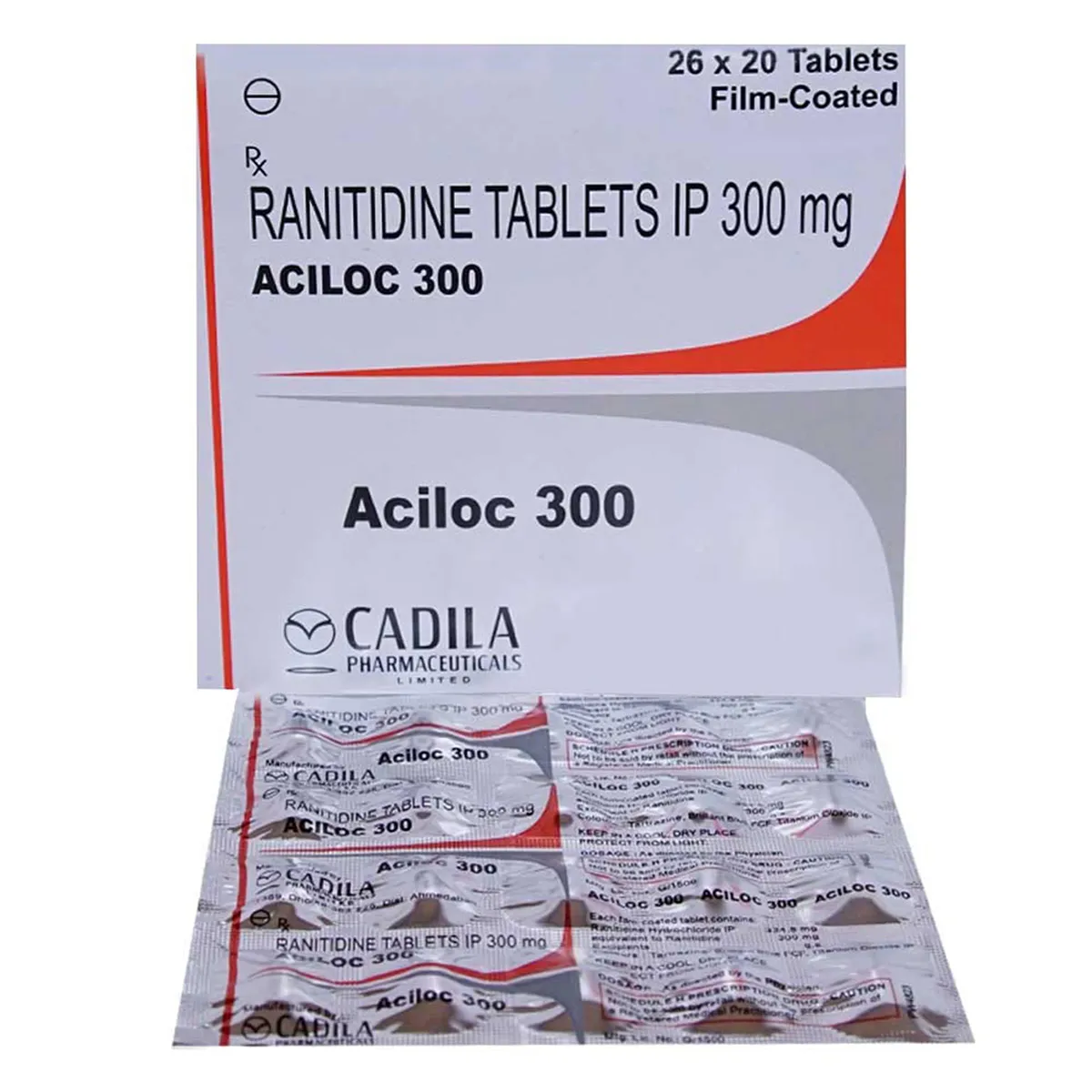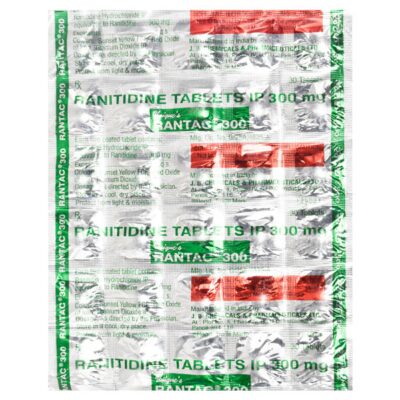🔥💊 Ranitidine 300mg Tablet: A High-Potency Acid Reducer with a Critical Advisory
Ranitidine 300mg is a high-dose H₂-receptor antagonist widely used to suppress excess gastric acid production. It offers greater potency and longer duration compared to the 150mg dose, typically administered as a bedtime regimen for maximum overnight acid control. Used for both active treatment and maintenance of gastrointestinal acid-related disorders, this dosage is essential in managing moderate to severe conditions.
🔬 Mechanism of Action
Ranitidine blocks histamine H₂-receptors on gastric parietal cells. This leads to:
-
Significant reduction in both basal and stimulated acid secretion
-
Increase in gastric pH, promoting healing of ulcers and esophagitis
-
Duration lasting up to 12 hours, making 300mg once-at-night effective
📌 Primary Indications
Ranitidine 300mg is commonly used in:
-
Duodenal ulcers: 300mg once daily at bedtime as effective as 150mg twice daily .
-
Gastric ulcers: as part of 8-week treatment regimens.
-
Erosive esophagitis/GERD: 300mg twice daily may be applied in severe cases
-
Zollinger-Ellison syndrome and other hypersecretory conditions: dosage adjusted based on need, sometimes far exceeding 300mg/day
-
Stress ulcer prophylaxis: off-label use in hospitalized patients
💊 Dosage & Administration
-
Bedtime dosing: One 300mg tablet after evening meal or before bed for convenience and overnight acid suppression
-
Alternatively, 150mg twice daily remains standard.
-
Max daily dosage for severe disease can reach 6g/day in divided doses, but 300mg represents a significant step above baseline
-
Treatment duration ranges from 4 to 12 weeks depending on condition.
⚠️ Precautions & Warnings
-
NDMA contamination concerns led to voluntary recalls and market withdrawal in the U.S. and other countries; all ranitidine products remain unavailable until safety is assured
-
May mask symptoms of gastric malignancy; persistent symptoms need evaluation .
-
Use cautiously in renal impairment; dosage adjustment recommended
-
In elderly or severely ill, there are rare reports of confusion, agitation, and cardiac conduction issues
🤒 Side Effects
Common:
-
Headache
-
GI upset: constipation or diarrhea
-
Dizziness and fatigue
Serious but rare:
-
Liver enzyme abnormalities, arrhythmia
-
Vitamin B₁₂ absorption interference with long-term use
-
Possible risk of Clostridioides difficile infection
🔄 Drug Interactions
Ranitidine may reduce absorption of drugs requiring acidic pH (e.g., ketoconazole, iron salts). It can also affect warfarin, theophylline, and glipizide—monitor therapy accordingly .
🧊 Storage
Store at 15–30 °C, protect from moisture and light. Keep out of reach of children. Do not use expired products, especially in light of NDMA concerns.
📝 Regulatory Status and NDMA Advisory
-
Since September 2019, multiple manufacturers (Sandoz, Glenmark, Amneal, Golden State, etc.) have recalled ranitidine products, including 300mg doses, due to NDMA, a probable human carcinogen.
-
In April 2020, the FDA requested removal of all ranitidine products from the U.S. market, followed by similar actions in Europe and Asia.
-
The drug remains withdrawn globally, and any re-introduction will require stringent testing to ensure NDMA levels are below unacceptable limits.
📝 Conclusion
Ranitidine 300mg once daily has been an effective tool for managing moderate to severe acid-related disorders, offering potency and convenience. However, widespread NDMA contamination led to its complete market withdrawal. Patients should consult healthcare providers for alternative therapies like PPIs (e.g., omeprazole), famotidine, or other H₂ blockers, pending reinstatement of safe ranitidine batches. Close medical guidance is essential for effective and safe therapy.
Note: This information is intended for educational purposes and should not replace professional medical advice. Always consult a healthcare provider for personalized guidance.




Reviews
There are no reviews yet.